Table of Contents
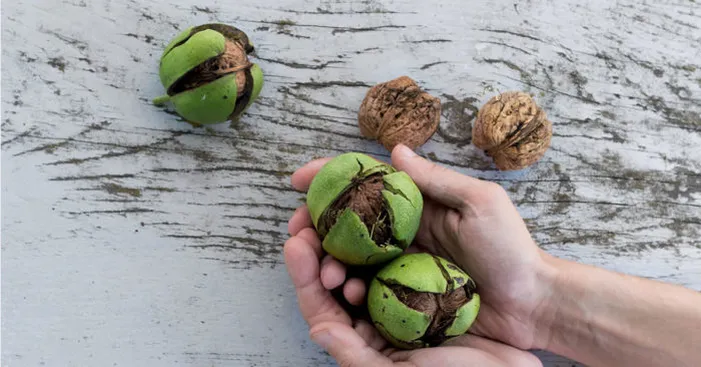
Belonging to the nut genus alongside Hazelnuts and Macadamia nuts, walnuts are very famous around the world and called by different names.
In many Arabian countries, people call it the “eye of the camel”, it is pretty accurate, isn’t it?!
Walnuts come in a round shape with two halves of a seed and a green thick outer shell that resembles that of an almond.
The core of the seed is protected with a hard brown coating which keeps the edible inner seed moisture and protects the oils from atmospheric oxygen.
Furthermore, walnuts usually grow in mountainous heights in the Himalayas, China, India, Syria, Lebanon, and even extend from Asia to Greece and Turkey. (1)
In recent decades, countries like the United Kingdom and the USA started planting walnuts.
Today the USA is the second producer of walnuts in the world only after China. (2)
Most people are familiar with dry walnuts and the amazing taste of its nutty seeds, which is why we created this article and based it on the other side of walnuts, green walnuts and walnuts leaf!
The amount of nutrients found in a green walnut, its green shell and leaves makes them all super beneficial for our health.
Many cultures have used the greener parts of walnuts in home remedies to treat several health issues. (3)
In the next part, we covered almost everything you need to know about green walnuts, their nutritional value and what health benefits do we get from consuming greener walnuts.
We also added a nice and easy recipe to show you how to make a delicious homemade green walnut jam.
In the second part, we focused it on walnut leaf, its health benefits and how to use it.
Furthermore, to enrich your experience we threw in a few amazing facts about walnuts and tips on how to store them.
We also covered the precautions you need to know before consuming green walnuts and walnut leaf.
Similarities between walnuts and the human brain:
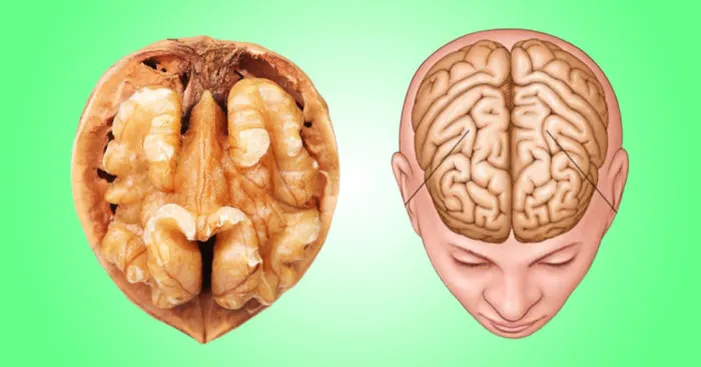
To start with, the outer green shell of a walnut resembles the scalp of the human brain.
Then, our skull bones look like the hard inner shell of walnuts.
Maybe those are coincidences, right? Wait there are more matches!
The soft thin layer between the hard shell and the walnut seed resembles the thin layers that separate our brains from the skull bones.
The right and left halves of the nut core are similar to the right and left brain hemispheres in terms of size and shape.
As a final match, the ridges and grooves in our brains are also existent in the walnut seed.
Green walnuts:
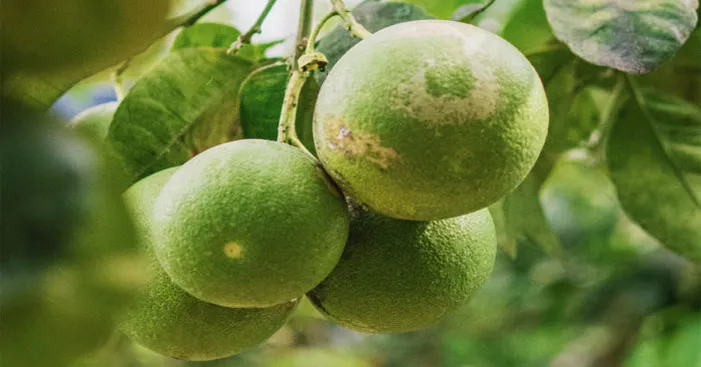
Technically, green walnuts are unripe walnuts that didn’t mature and fall off the tree yet.
Although most people would think that that green walnuts are raw and not yet full of nutrients.
Despite this, they are very rich in vitamin C in both the unripe seed and the green outer shell.
Green walnuts provide around 2400-3700mg of vitamin C per 100g and that’s over 120% of our daily need in this vitamin. (4)
Green walnut shells are a good source of bioactive compounds as it contains a lot of antioxidant properties.
Nonetheless, the antioxidant properties of green walnuts decrease throughout the ripening process. (5)
Walnuts carbs:
For centuries and across different cultures, walnuts had a very good reputation.
It is because of its many health benefits and different varieties that make it a highly valued product.
Fresh walnuts provide a good source of fats but also excellent nutritional values.
These nutritional data counts for 50g of walnuts seeds (about 14 walnut seeds or 28 halves): (6)

- Calories: 327
- Fibers: 3.45g
- Protein: 7.16g
- Carbs: 6.85
- Fat: 32.6g
- Vitamin E: 9.6%
- B1 Vitamin: 14.2%
- B6 Vitamin: 18%
- B9 Vitamin: 28%
- Calcium: 2.35%
- Iron: 16%
- Phosphorus: 21%
- Potassium: 6.8%
- Magnesium: 18%
- Zinc: 19.5
- Copper: 45%
- Selenium: 4.2%
Furthermore, this nut provides a good quality of polyunsaturated fatty acids which are very beneficial for the cardiovascular system.
Also, its content is rich in minerals such as zinc, potassium, and copper which makes it a perfectly suited food for athletes and people lacking energy.
Walnuts are full of Omega-3 and Omega-9 fatty acids which help in the fight against bad cholesterol.
These nuts are a good source of B vitamins and vitamin E and these vitamins have properties that slow down the aging process.
The next part is going to show most of the proven health benefits of consuming green walnuts.
Benefits of green walnuts:
Probably there is too much to walnuts than we already know, but here are the top 8 health benefits of green walnuts:
- Its large content in fatty acids, vitamin, protein and dietary fibers makes us feel fuller for a longer time which is ideal to lose weight. (7)
- Very beneficial for women during pregnancy due to its richness in fatty acids and antioxidant properties.
It protects the fetus from allergies, increases the immunity, and helps in the development of the intestines. (8) - Reduces bad cholesterol due to its antioxidant properties and omega-3 content.
- Protects against heart diseases.
- Increases skin hydration and nourishes it against aging signs because green walnuts contain various vitamins and collagen. (9)
- A good snack to help fight insomnia as it contains substances that regulate the sleeping process.
- Due to its content in B1 Vitamin, it helps hair growth and protects it from falling out.
- Improves physical activity thanks to the B vitamins content. (10)
Green walnut jam:
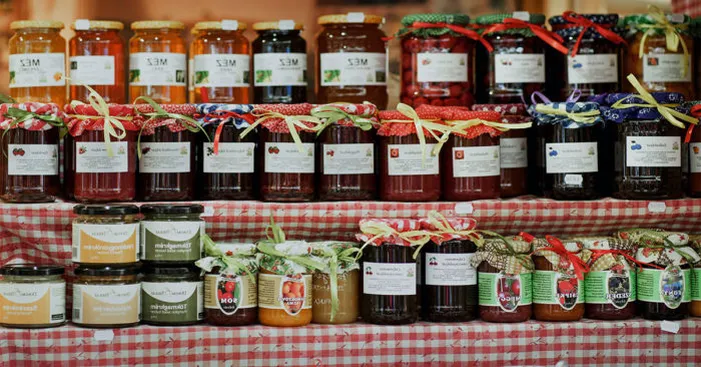
You’re probably more familiar with strawberry jam but there are many exotic homemade jam recipes you can try yourself!
If you want to change the classic fruit jams, to delight your taste and vary the pleasures, you can prepare this delicious recipe of green walnut jam.
To make a delicious green walnut jam at home you will need:
- Green unripe walnuts.
- The same weight of walnuts in sugar.
Here are the steps to prepare a good green walnut jam:
- Get green unripe walnuts (the quantity you want to use).
- Peel the walnuts by removing the thin skin and leaving the thick green shell on, then put them in cold water for 3 days, changing the water daily.
- After three days, boil the green walnuts in water until they soften and then drain the water.
- Get rid of excess water then weigh the soft green walnuts, and prepare the same weight in sugar.
- Mix the sugar and the soft walnuts together with some water and heat them on medium heat until the water evaporates.
- During that same time, prepare a syrup from water and sugar on medium heat and mix until it becomes slimy.
- When the syrup is ready, pour it over the nuts and let it cook until the mixture thickens.
- When it’s done, let it cool down then you can put it in a glass jar sealed from air and place it in the fridge.
This jam is ideal to accompany yogurt or a piece of bread, it is also marvelous to garnish pancakes or a fruit pie!
Green walnut shells:

The majority of people consume walnut seeds either because they taste really good or because of their health virtues.
In addition to the benefits of its seeds, there are a lot of health benefits that come from the green walnut shells including:
- Good for the skin:
It treats skin diseases including the pimples that appear on the skin, acne especially when you mix it with honey. - Treatment of hemorrhoids:
One of the effective remedies you can make at home to treat hemorrhoids is, cooking the green shell of walnuts in olive oil and apply it to the hemorrhoids. (11) - A remedy to purify blood:
You can mix dry green walnut shells powder with honey to obtain a dark green natural lotion.
2 tbsp a day of this mixture is super beneficial as it purifies the blood and helps in case of Peptic ulcer. (12) - Help in case of rashes:
By simply rubbing the green walnut shell on an irritated area, it can help deal with eczema, tuberculosis, or even herpes. (13) - Effective against nosebleeds:
By drying green walnut shells and then crushing them into powder, it can be an effective home remedy to treat nosebleeds.
Precautions before you start consuming green walnuts:
Generally speaking, nuts provide us with many health benefits only when you consume them in moderate amounts, this applies to all the nuts.
Consuming excessive amounts of walnuts can cause the following side effects: (14)
- Allergy attacks range from mild to severe.
- Weight gaining.
- Digestive problems such as diarrhea, stomachaches, and bloating.
- Pregnant women who are in the last month before labor and breastfeeding mothers should only consume a very moderate amounts of walnuts after they consult a doctor.
Walnuts leaf:
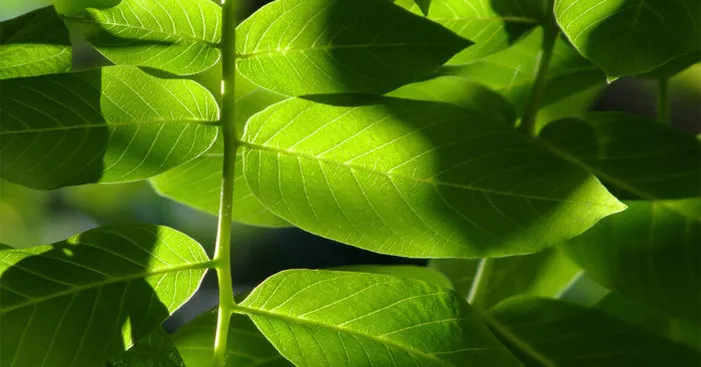
If you thought that green walnuts contain vitamin C in the green outer shell is cool, then you would be amazed at the amount of this vitamin in the leaves.
Green walnut leaves are full of vitamin C and other active plant compounds such as phytochemicals. (15)
In 2016, a study showed consumption of walnut leaves reduced the symptoms of diarrhea in mice.
This could be due to the existence of compounds such as hydroxycinnamic acid and flavonoids in these leaves. (16)
In Europe, walnut leaves are a very common home remedy for skin conditions such as eczema and blepharitis. (17)
Recent research indicated that a walnut leaf contains antifungal and antiseptic properties. (18)
Another common use for walnut leaves is to expel intestinal worms and detox the digestive system.
Some people suggest soaking the leaves in water overnight, and then use the water as a face wash or any skin inflammation condition.
Benefits of walnut leaf and common uses:
These are the most common walnut leaf uses: (19)
- Boiled walnut leaves are very beneficial for women who complain of vaginal infections such as Genital Moniliasis and Trichomoniasis. (20)
This remedy consists of boiling about 50g of walnut leaves in a liter of water and letting it cool down, then using it as a vaginal wash. - In case of itching and soring, some people use walnut leaves extract by applying it directly to the irritated area.
It is also said that this extract is very useful in case of excessive sweating or sweaty feet. - You can use the water obtained from boiled walnut leaves to make compresses in case of fever.
- The soaking of walnut leaves can also be used as a hair mask and left overnight as it nurtures the scalp and helps the hair gain its shining and softness back.
- Grinding walnut leaves and rubbing the teeth with the grinds protects them from decay, eliminates bad breath, and whitens them.
- Boiling walnut leaves and drinking the water after it cools down can treat swollen lymph nodes.
Also, it supports the digestive system and helps fight intestinal worms. - Droplets of soaked walnut-leaves water can help treat gonorrhea of the ear.
- Drinking a cup of walnut leaf water (soaked overnight or boiling) a day can boost your energy.
Walnut leaf and the precautions you need to know:
In the case of oral consumption, walnut leaves are a laxative but this type of usage is not recommended. (21)
In addition to the many nutrients in a walnut leaf, it contains juglone which is usually safe for humans but can be toxic if not used with moderate doses. (22)
Hence, prolonged usage is strictly unapproved.
One of the possible negative side effects of consuming highly concentrated walnut leaf extract is a painful irritation of the mucous membrane.
Storing green walnuts:
These technics almost work for most types of nuts and walnuts are not an exception.
Basically, if you store green walnuts at room temperature they will stay fresh for a few months.
Putting walnuts in the freezer can extend their lifespan for up to one year. (23)
References:
(1): Walnut Tree Climate Requirements – Wikifarmer
(2): World Walnut Production by Country – AtlasBig.com
(3): Green walnut husk extracts Proliferation and Migration in Gastric Cancer – PMC (nih.gov)
(4): Walnuts – an overview | ScienceDirect Topics
(5): Effect of different ripening stages on walnut kernel quality: antioxidant activities, lipid characterization and antibacterial properties – PMC (nih.gov)
(6): Nuts, english, walnuts nutrition facts and analysis. (nutritionvalue.org)
(7): Weight Loss: 5 Nuts To Burn Belly Fat And Lose Weight, The Healthy Way (ndtv.com)
(8): 7 Advantages Of Walnuts During Pregnancy | The Prenatal Nutritionist
(9): Walnut Benefits for Skin That You Should Know! (mamaearth.in)
(10): Study suggests walnuts are bridge to better health as we age | University of Minnesota (umn.edu)
(11): Hemorrhoids | NIDDK (nih.gov)
(12): Peptic Ulcers (Stomach and Duodenal Ulcers) | NIDDK (nih.gov)
(13): Healing Source Walnut Peel – Nutto & Frutto (nuttofrutto.com)
(14): Walnuts: 5 Major Side Effects + How Many Walnuts To Eat (stylecraze.com)
(15): The vitamin C content of the trait and leaves of Juglans regia and Juglans nigra (eurekamag.com)
(16): Polyphenols and gastrointestinal diseases – PMC (nih.gov)
(17): Blepharitis – NHS (www.nhs.uk)
(18): Antimicrobial and Anti-inflammatory properties of Juglans Regia Leaves : Oriental Journal of Chemistry (orientjchem.org)
(19): 6 Brilliant Uses for Walnut Leaves You Never Knew (ruralsprout.com)
(20): GENITAL MONILIASIS AS A CONJUGAL INFECTON | JAMA Dermatology | JAMA Network
(21): Walnut – Juglans regia [Single Herbs] (herbgarden.co.za)
(22): Black Walnut Toxicity | The Morton Arboretum
(23): How Do You Store Green Walnuts? – Sweetish Hill
